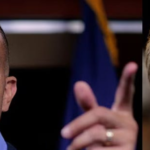Why would a brand give up on a winning brand promise? Why not contemporize that winning brand promise? Why decide it is best to copy strategies from other brands when you already have a winning strategy that just needs some modernizing?
These are some questions that perhaps Wall Street is asking about Target. While Walmart has performed admirably and is suggesting a rosier future, Target is in the corner with Macy’s and other retail establishments with less happy results and guidance.
This article is part of Branding Strategy Insider’s newsletter. You can sign up here to get thought pieces like this sent to your inbox.
The New York Times described Target’s November 2024 earnings call with analysts as follows:
“Target rattled Wall Street on Wednesday with a downbeat earnings report showing a sales decline, lower profit and an unwelcome buildup of unsold inventory. The company also cut its forecast for the full year, a bad omen ahead of the critical holiday shopping season.
“Target’s stock plunged more than 21 percent for the day, a loss of nearly $12 billion in market value and its biggest slide in two and a half years.
“Sales at Target stores last quarter fell 1.9 percent from the same period last year, offset somewhat by a 10.8 percent rise in online sales. The company said it expected sales to be flat this quarter and cut its forecast for full-year profit, almost entirely reversing an increase announced just three months ago.”
Since November, Target performed well over the holidays. Target executives announced that holiday sales were better than expected. But, Target did not alter its outlook. This is probably due to the fact that even with nice sales over the holidays, Target warned investors that profit would be under pressure. As Barron’s, the financial newspaper, stated, the fact that was a “… stronger top-line performance won’t necessarily trickle down to the bottom line this quarter.”
When Target was a shopping mecca, its draw was the ability of anyone to own stylish, timeless design at affordable prices. Anyone could buy a few items and make a room look as if that room walked off the pages of House and Garden magazine. Design for the masses made Target. The iconic product was the Alessi teapot.
If you think the idea of design for the masses is irrelevant, think again. The Franklin Mint made a mint focusing on art for the masses. Paintings, Princess Diana memorabilia, elaborately-carved chess sets and American Eagle sculptures were highly prized, bringing art lovers with tiny budgets great joy.
Target won customers of all incomes because its promise of stylish design at affordable prices was relevant and differentiating, something neither Walmart nor Costco could promise. And, Target had a reputation for quality, leadership and trustworthiness. Buying an item from Target announced to others that you had taste, that you knew style and that you were a rather smart shopper. It was not an embarrassment to have a designer item from Target, rather a badge of honor. People were OK with saying that they had been shopping at Target.
All of Target’s brand promise is now gone.
Now, Target’s promise is more generic. According to executives responding to analyst questions on the November earnings call, Target promises, “…affordability, newness, seasonal relevance and ease.
Furthermore, the concept of Target value is now price and deals rather than the worth of owning something incredibly stylish and coveted at a great price. Target executives indicated the following: “a singular focus on value that includes low prices and compelling deals, combined with an elevated assortment and experience. …. we’ll continue to lean into innovation and newness and value.”
The New York Times wrote about Target’s laser focus on price and deals:
“Target’s troubles have come as it focuses on cutting prices to win over shoppers squeezed by inflation. Last month, the company said that it would lower prices on more than 2,000 items, including Crisco vegetable oil, cat litter and a Bluey toy fire truck, and that it would have to cut prices on 10,000 items by the end of the year. Although the number of visits to Target increased 2.4 percent last quarter, the average amount that customers spent decreased 2 percent.”
Target’s improved holiday 2024 season belies the fact that Target’s growth was unprofitable growth. All of these sales and discounts negatively affected Target’s margins. Even with all of the holiday sales, Target did not change, and could not change, its profit guidance. CNBC reported this unprofitable growth as follows:
“Discounts and sales events have remained a significant sales driver as consumers emerge from a more than two-year stretch of high inflation. It’s unclear how much those deals will cut into Target’s … profit margins, and whether sales will keep improving if promotions fade away.”
Deals create deal loyal customers, not real loyal customers. And, deals mean less profit and lower margins. Wall Street understands and punished Target by sending Target’s shares downward almost 3%. One thing Wall Street watches is a brand’s margins.
Target was never about deals. Target’s promise was always about great brand with great prices. And, that great brand promise was relevant and differentiated.
Somewhere along the retail road, Target decided to compete with Walmart and Costco where varieties, groceries and low prices rule the roost. Target lost its brand promise. When it came to design, especially in fashion, Target gave away stylish for trendy. Target went all-in on trendy. Target CEO, Brian Cornell, focused on trendy, current fashion over Target’s heritage of “affordable” stylish fashion.
Trendy and Stylish are two very different things. The difference? Trends are temporary. Style is eternal.
Being stylish about expressing your personal taste is about your own authenticity; being true to who you are. Trends come and go. Style does not. It is just not inspiring to see people wearing the latest trendy item promoted on Tik Tok. To be stylish, a person chooses fashion that reflects their own preferences and tastes. To be trendy, means, choosing clothing based on what is popular at the moment. Trendy dressers choose the identity reflected by the clothing. Stylish dressers choose clothes that reflect their own identity. Claire’s, the tween-teen mecca, is an extraordinary example of self-expression of one’s personal style. Claire’s promise is all about being who you are and being self-expressive.
A brand promise is not a theoretical construct; not an arty, ad agency visualization. A brand promise is a brand’s direction. A brand promise summarizes in a brief sentence (or two) the special contract that exists between a brand and its customers. A brand promise describes what a brand is intended to stand for in the mind of a specific group of guests and/or prospects. By consistently living up to the brand’s brand promise, brand owners ensure that a brand will be relevant and distinctive. A powerful brand will have a powerful brand promise. A powerful brand creates brand value. Without brand value, there is no shareholder value. Perhaps this is what Wall Street is waking up to now when listening to Target’s earnings call.
Target not only decided to compete on groceries and large-scale items like Walmart and Costco, but in fast fashion trends like H&M and Zara. As Target’s Chief Commercial officer told analysts, “I do think what differentiates Target is our multi-category business.”
To be fair, Kohl’s is in a similar situation. Under its previous CEO, Kohl’s decided to ignore its current customers and its promised experience while catering to new customers who did not shop there and did not love Kohl’s. The new Kohl’s approach was to remove inventory that drew its long-time loyalists while substituting Sephora stores and Babies R’ Us stores inside Kohl’s. The idea was to attract younger customers. Instead of modernizing the brand promise, Kohl’s decided to ditch its promise for one that would be attractive to new customers: customers who care for Sephora and Babies R’Us rather than Kohl’s. Sales tanked. And, as Kohl’s learned, it is more expensive to attract new customers than to keep current customers.
Of course, brands must have loyal customers and new customers. But, focusing on new customers at the expense of existing customers is a mistake. This is why it is always necessary to keep a brand promise updated. A brand cannot afford to lose loyal customers. Target’s loyalty program demonstrates how critical the loyal group is for brand profitability and stability.
Trying to be what you are not while not being who you are not only turns off your core base of customers but makes your brand a poor follower, even a commodity. You will have customers who like you a little. But, you have lost the customers who love you a lot. This is a recipe for unprofitable growth, as Target is experiencing.
Contributed to Branding Strategy Insider by: Joan Kiddon, Partner, The Blake Project, Author of The Paradox Planet: Creating Brand Experiences For The Age Of I
Branding Strategy Insider is a service of The Blake Project: A strategic brand consultancy specializing in Brand Research, Brand Strategy, Brand Growth and Brand Education
FREE Publications And Resources For Marketers
Post Views: 19









